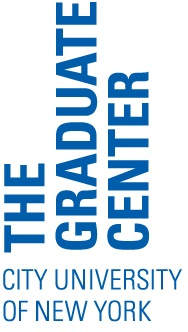Advice for Incoming International Students
By Jiaqi Wang
Every August, the Graduate Center brings a few hundred new graduate students from all over the world to its campus in fabulous New York City. Through the Graduate Center (henceforth, GC), students can get access to world-renowned researchers/activists both locally and through the interuniversity doctoral consortium. In New York City, virtually everything that you can imagine is ready in front of you. Facing such rich resources and convenience, new international students might still experience a multitude of challenges. International students should have been already in touch with and be aware of the services offered by the Office of International Students. Below, I’ve listed some additional useful resources and discussions.
Advice on living in NYC
For those who are new to New York City, its glamor can be a intimidating. There is no need to panic. If you have noticed, the Office of Admissions at the GC has launched a blog dedicated to incoming new students. The following link will take you there: https://newgcstudents.commons.gc.cuny.edu On this website, a plethora of issues are being discussed:
- Housing information and NY state residency:
- Why you should move to Queens
- Why I love living in Brooklyn
- East Harlem: Culture and community
- Roommate matching
- Ten things to see your first week exploring the city
- Cheap eats near the GC
Advice on optimizing course load
When it comes to planning for new semesters, we tend to follow our old mindsets. Since most international students are not familiar with the education system in the States, a potential problem can be that we might register for more courses than necessary, which will very likely overwhelm us as the semester progresses. This is one dilemma I faced when I started my program. Thus, one highly recommended question to think about is how to optimize course load. When sitting in your program lounge, you may have gotten some advice from senior students, “Doing a PhD is not like doing an undergrad, you can’t take too many courses.” As far as I can see, this is a truism. I presume no graduate students intend to follow their crazy undergraduate course scheduling. In reality, people normally choose from 2 to 4 courses per semester. Below is a summary of the conflicting arguments I heard about how many courses to take and what to take. Have a look, seek advice from a faculty advisor, and then make a reasonable plan for yourself.
- We should take more courses: Steve Jobs told people that if he had not taken a calligraphy course, he would not have been able to create multiple typefaces or proportionally spaced fonts for the Mac. Similarly, a professor in hard sciences once told me, “Breadth is more important than depth in the first two or three years of the PhD process. Every student needs to take demanding classes outside of his/her own area.” These opinions present one perspective. It is understandable that the more courses you take in your discipline, not your subfield, the more knowledge you will obtain, and also a higher possibility that you will benefit from this “extra” knowledge when working on a narrowed research topic or seeking a job in a different field. Graduating PhDs sometimes find themselves too “narrow-minded” when hunting for jobs. A friend of mine who is a math PhD specializing in geometry, for instance, told me that he needed to learn statistics to be more employable.
- We should take fewer courses: A PhD who managed to graduate within five years might have found the advice above impractical. It is true. The advice is wise but focuses more on the eventual output, which inevitably overlooks the fact that students have research requirements and they need to get them done in a timely manner. Professor Matt Might at University of Utah has written an interesting post in which he summarizes 10 easy ways to fail a PhD. The first two points present the idea that we need to focus on our research, taking too many courses will distract you from this objective. Similar suggestions abound in people’s reflections on their PhD education. They will normally tell you that if they had focused on their research earlier they would not have needed a sixth year.
A brief introduction to Digital Initiatives at the GC
Our New Media Lab (henceforth, NML) located on the 7th floor of the GC is a great place for students whose research involves digital media and related technologies. NML is equipped with high-end workstations, software, a web server, and a spacious meeting room. You can find more details concerning its facilities here. If you have ongoing research projects which need digital equipment, feel free to stop by the lab and take advantage of the facility there. In addition, the lab also offers opportunities for GC graduate students who wish to create digital projects related to their academic research topics or their doctoral dissertations. The GC Library’s blog is also a terrific resource both for information and for a schedule of the Library’s upcoming workshops. For those first-year graduate students who do not have ongoing research projects but are fairly interested in how digital technologies could facilitate their research, the good news is that our Digital Fellows will offer a series of workshops in the fall. Go to their website, sniff around, and register for any workshops that interest you. Last, but not least, the GC Digital Scholarship Lab is a new research space for those interested in the use of technology in research or teaching. You can find out about all of the GC’s Digital Initiatives here.
– Jiaqi Wang




